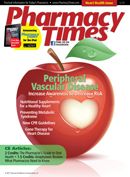Publication
Article
Pharmacy Times
Generic News
FDA May Tighten Controls on Generic Drugs
Stricter rules could be on the horizon for the nation’s generic drug makers. Citing anecdotes from patients and generic industry employees about the variability of generic medicines, Janet Woodcock, MD, director of the FDA’s Center for Drug Evaluation and Research, said the agency is reconsidering its regulatory approach.
“I’ve heard it enough times from enough people to believe that there are a few products that aren’t meeting quality standards,” Dr. Woodcock said in an interview following her appearance at the Generic Pharmaceutical Association (GPhA) Fall Technical Conference in Bethesda, Maryland. “They say: ‘I know there are products out there that aren’t equivalent,’ and typically they’re manufacturing folks.”
Responding to her comments, GPhA said that “the FDA’s demanding generic review and approval procedures for generic applications are the gold standard for regulatory agencies around the world.” The association reiterated its commitment to working with the FDA to ensure that generic drugs are therapeutically equivalent to their brand counterparts.
“To do anything less would not only be contrary to the interests of the patients our industry proudly serves, it would be contrary to the mission of the FDA,” the statement read.
Dropped Data a Side Efect of $4 Generics
An editorial published recently in the New England Journal of Medicine sheds light on the dark side of $4 generic prescriptions. Coauthor Niteesh Choudhry, MD, PhD, an assistant professor at Harvard Medical School, says the discount programs provide no incentive for pharmacies to submit claims data when patients pay cash.
The cumulative impact of the missing data is “not trivial,” according to Dr. Choudhry and his coauthor, William H. Shrank, MD, MSHS. As a result, patients who take the drugs as prescribed “will be classified as nonusers of or ‘nonadherers’ to these treatments.” This undermines the work of medical researchers, who use pharmacy claims data to evaluate the safety and effectiveness of medications.
The ripple effect doesn’t stop there. Missing claims also compromise the integrity of cost-effectiveness research by pharmacy benefit managers and pay-for-performance contracts with physicians and hospitals, Drs. Choudry and Shrank noted.
They encourage pharmacists to submit claims no matter what, but stress that without proper incentives, individual pharmacists cannot be blamed for the dropped data. A long-term solution must include a restructuring of information flow—preferably one that capitalizes on the growing availability of electronic health records.
“Administrative data have become central to the evaluation and management of the quality of health systems,” said Drs. Choudry and Shrank. “As we strive to control costs for patients and the health care system, we must be certain not to diminish our ability to measure and improve the quality of US health care.”
Generics to Cut Drug Spending by $70 Billion
The anticipated shift of brand-name medicines to generic alternatives over the next 4 years will save the US health care system at least $70 billion, according to a report by the market research firm IMS Health.
Speaking at the Reuters Health Summit in November, IMS Health’s senior vice president Murray Aitken said the dollar amount is “a number we haven’t seen before in terms of the number of potential savings.”
He expects generics to increase their market dominance to at least 85% of all prescriptions by 2014, as patents on blockbuster drugs continue to expire. The “patent cliff” will have a large impact on prescribing practices, which already favor generic drugs.
When generic versions are available, physicians prescribe them 93% of the time, according to IMS. The rate is likely to increase as generics become available for top-selling drugs like Lipitor (Pfizer), Plavix (Bristol-Myers Squibb; sanofi-aventis), Zyprexa (Eli Lilly), and Singulair (Merck).
As for the brands, Aitken told Reuters their survival will depend largely on “innovation and the value of medicines that are being developed.” He said physicians will prescribe generics first—switching to brands only when a generic is proved ineffective.
Community Pharmacists a Conduit for Generics
A recent report by the National Community Pharmacists Association (NCPA) suggests community pharmacies have a leg up on pharmacy benefit managers (PBMs) when it comes to dispensing generic drugs.
In their third-quarter earnings statements, major PBM players Medco Health Solutions, CVS Caremark, and Express Scripts reported generic dispensing rates hovering just above 60% for their mail order pharmacies. The generic dispensing rate in community pharmacies was 69% in 2009.
NCPA released the figures as part of the 2010 NCPA Digest, sponsored by Cardinal Health. Their analysis found that community pharmacists’ ability to help patients manage prescription costs is emerging as a distinct advantage of the independent pharmacy business model. When pharmacists use their expertise to “help patients manage their prescription costs and medication regimen in a down economy,” said NCPA leader Douglas Hoey, RPh, independent pharmacy owners and patients reap the benefits. PT







